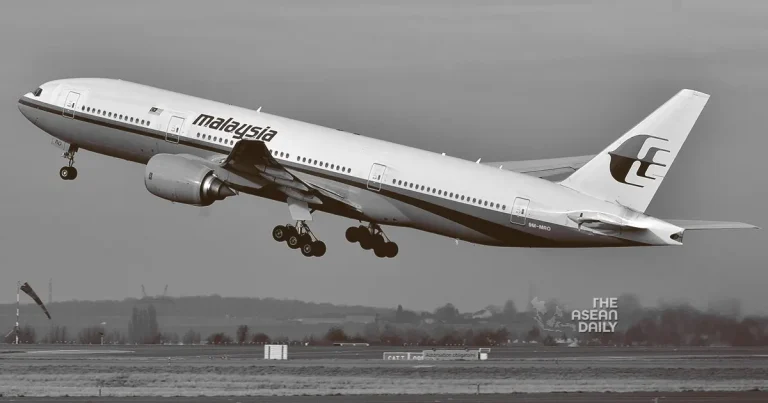7-3-2024 (KUALA LUMPUR) Ten years after the mysterious disappearance of Malaysia Airlines Flight MH370, hopes for a new search to finally uncover the truth and put an end to all speculations are emerging. On March 8, 2014, the Boeing 777 aircraft vanished without a trace, carrying 239 passengers and crew members on a flight from Kuala Lumpur to Beijing. Despite extensive search efforts and global attention, the fate of MH370 remains unknown, leaving unanswered questions and heartache for the families of those on board.
The last communication from the cockpit of MH370 was the chilling radio message, “Good Night, Malaysian Three Seven Zero,” sent at 1:09 a.m. on that fateful night. While the aircraft was tracked passing through the airspace between Vietnam and Malaysia around 1:30 a.m., no distress signal or mayday message was ever received. This sparked a worldwide investigation and led to numerous theories and speculations about what might have happened.
The search for MH370 became the largest and costliest operation in Malaysia’s history, involving 82 aircraft and 84 vessels from 26 countries. Over a span of 1,169 days, an area of 232,040 square kilometres was meticulously scoured in the Indian Ocean. Despite these efforts, only three pieces of debris, known as flaperons, were positively identified as belonging to MH370. These fragments were found on a beach in the Indian Ocean, providing little insight into the aircraft’s disappearance.
The families of the missing passengers and crew have endured immeasurable pain and uncertainty over the past decade. For them, finding closure seems nearly impossible. Intan Maizura Othman, the wife of cabin crew member Mohd Hazrin Mohamed, expressed the natural desire to know what happened and where their loved ones have gone. Jacquilita Gonzales, wife of fellow cabin crew Patrick Gomes, echoed these sentiments and expressed the hope that the search for MH370 would resume, bringing an end to the mystery and preventing similar incidents in the future.
Bai Zhong, the husband of Chinese passenger Hou Aiqin, urged the government to continue search efforts and emphasized that the families of the victims would never forget their loved ones or stop seeking the truth. The last known location of the aircraft, based on analysis, was in the Indian Ocean west of Perth, Australia. In 2015, it was officially declared that MH370 had suffered an accident, and all those on board were presumed dead.
Ocean Infinity, a U.S.-based exploration company, launched a search for MH370 in 2018 but was unable to locate any debris. The search was eventually called off, leaving the families with lingering questions and a sense of unresolved grief. However, there is renewed hope as Prime Minister Datuk Seri Anwar Ibrahim has expressed his willingness to reopen the investigation if new concrete evidence emerges. The Transport Ministry has also assured its commitment to seek Cabinet approval for a new contract with Ocean Infinity to resume the search.
Assoc Prof Major (PA) Dr Mohd Harridon Suffian, the Head of the Search and Rescue Unit at Universiti Kuala Lumpur (UniKL) Aviation Technology Institute, believes that despite the decade-long gap, a more conclusive answer to the air tragedy could still be found. He suggests utilizing advanced laboratory techniques, both locally and internationally, to conduct detailed studies, methodological analysis, and structural analysis. By examining debris patterns and employing a new search methodology, there is a glimmer of hope that the mystery surrounding MH370 may finally be unraveled.




